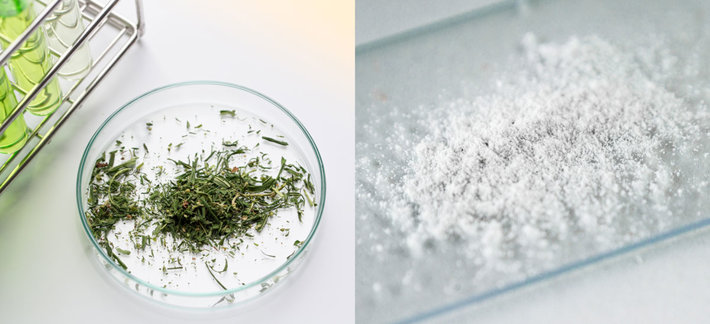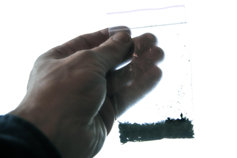Could Legal Marijuana Contain Fentanyl In Addition To Mold, Heavy Metals, and Pesticide?

The marijuana issue is probably one of the most heavily contested aspects of the addiction epidemic. In anything addiction or marijuana-related, there will be an argument over whether or not marijuana is harmful, whether or not marijuana is addictive, whether or not it’s good for you, bad for you, and so on.
Beginning with California’s legalization of the substance for medicinal use in 1996, marijuana support has gained ground over the last 23 years. One can safely say that, unfortunately, our nation seems to be moving closer and closer to full legalization of the substance.
California set a precedent. Now, just a little over two decades later, more than half of all states have legalized marijuana for medicinal use, and about a dozen states have legalized the drug for recreational use. But when we hear reports about highly toxic and lethal drugs like fentanyl being added to marijuana, we have to ask ourselves if we are heading in the right direction with marijuana legalization.
Isolated Stories of Toxic, Even Lethal Doses of Marijuana

A 2017 article out of Cleveland, Ohio came across my desk recently from a colleague and old friend who thought it might be something I’d want to see. The article was titled “Marijuana Laced with Fentanyl: Police Warn of Another Potentially Deadly Drug Mixture.” It got my attention.
The article talked about a warning sent to Northeast Ohio law enforcement in 2017. It was a necessary caution to police officers all across that section of the state, warning them that recently seized marijuana samples had tested positive for trace elements of the highly toxic and potentially lethal opioid fentanyl.
While no actual proof was provided of there being marijuana with fentanyl added and as the news article was only a couple paragraphs long, I decided that more research was needed. One source was good, but two sources would be better. And even just a fleeting possibility of fentanyl being laced into marijuana drugs was, and is, very concerning. Such a combination would create an extremely toxic substance, especially if potential users did not know that fentanyl had been added to the mix.
Even if prospective users were told that the marijuana they were buying had fentanyl in it, it would still be highly toxic and potentially deadly. We have no data or research studies which show the effects of fentanyl on the human body when it is smoked along with marijuana. That would be an entirely new type of fentanyl misuse. Given how little fentanyl it takes to prove a fatality in a user, we can only imagine how dangerous an inhaled version of the drug would be.
Concrete Evidence of Fentanyl-Laced Marijuana
A deep web search revealed another short article, this one posted by WKBW News out of Buffalo, New York. Coincidentally, this article was published this year, showing that the trend of fentanyl-laced marijuana which likely started in 2017 is still a trend today. And in the New York instance, law enforcement groups in the area had to issue a high-priority, state-wide warning against the use of marijuana. Why? Because there was indisputable evidence that the marijuana confiscated in the town of Thompson, NY had tested positive for fentanyl. Solid proof that the marijuana seized in a Walmart parking lot had trace elements of fentanyl in it.
I will be the first to concede that there have only been isolated, infrequent incidences of fentanyl cropping up in marijuana samples. But even if there is only a slight chance of the toxic opioid being cut into a marijuana supply, why would anyone want to take that chance? It’s a lethal risk. By itself, marijuana use is unlikely to be fatal, but with other drugs added into it, the odds of one losing their life from marijuana use increase drastically.
The Number One Risk in Using Drugs

The number one risk in using drugs, in general, is that one never knows exactly what is in those drugs. We have no way of knowing what is in a seemingly “harmless” dose of marijuana. However, there is enough research in circulation at this time to give us reason to believe that the marijuana of today is not the harmless, organic, 100% plant-based drug that we are told it is.
Let’s take a case study from Colorado, one of the first states to legalize marijuana for both medicinal and recreational purposes. An article in the Smithsonian discusses the controversy over the lack of cannabis regulation in Colorado. The article cites research from the American Chemical Society.
Here is where things get concerning. Marijuana test samples out of Colorado were found to have very little CBD in them (CBD being the chemical compound in cannabis that is of interest to the supporters of medical marijuana). Furthermore, those same test samples revealed a good deal of fungus, pesticides, and heavy metal residuals found within the marijuana. And since Colorado does not regulate marijuana growers, what’s stopping this trend from continuing? How can we trust an already controversial product when the product itself is not even regulated?
When you buy food from the grocery store, that food is only allowed to be sold after passing strict regulations, inspections, and examinations. The U.S. is known for having strict regulations on the safety of consumable products. But the absence of those regulations is a huge part of what makes drugs so dangerous. No regulations means no way of knowing what is in a substance. Even marijuana, legalized in many places, is not yet held to the kinds of regulations that our food is held to.

At the End of the Day…
We have to ask ourselves, at the end of the day, is marijuana really that safe? If marijuana alone is harmful, and there is the potential for numerous unknown additives then why are we legalizing it?
Today we are concerned with synthetic marijuana, Fentanyl-laced marijuana, marijuana edibles and extracts, high THC-concentrate marijuana, and ongoing, irrefutable proof that cannabis can be addictive. Despite the huge risks, current legislation ignores the dangers. The substantial risks of this substance outweigh any supposed benefits that users might get from using it.
Sources:


 ®
®